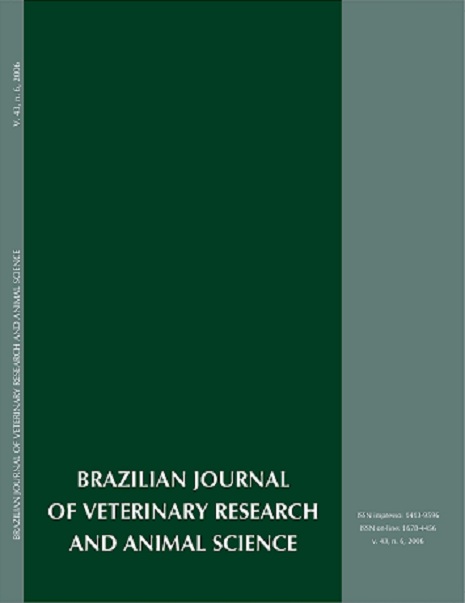Experimental infection of jirds (Meriones unguiculatus) with larve of sheep nematodes: bio-nutritional efficiency
DOI:
https://doi.org/10.11606/issn.1678-4456.bjvras.2006.26559Keywords:
Jirds, Nematode, Immunossupression, Bio-nutritional efficiencyAbstract
We aimed to evaluate the risk factor of serum reactive dogs to antileptospire agglutinin and their spatial distribution in an urban area. We collected 1,000 blood samples from dogs at 20 immunization centers, homogeneously distributed in the urban area (32 km²) of Botucatu, Sao Paulo, Brazil. Diagnosis was made by microscopic serum agglutination using 24 serovars of Leptospira spp. Statistical analysis was performed by Goodman's test with 5% of significance. Spatial clusters were tested by spatial scan statistic using SaTScan. We found that 17.9% dogs reacted to Leptospira spp. (p<0.0001). Dogs with street access (22.14%) were more reactive (p<0.05) than those without (14.83%). The scan test indicated only one significant cluster influenced by age. Incorporating each one of the co-variables gender, breed, and street access to age, we found that street access was the most important. Street access and age were the most important risk factors in the large number of reactive animals in the cluster, with the castellonis serovar being the most reactive in urban dogs. The identification of a cluster with more reactive dogs than expected allows local preventive measures to be taken.Downloads
Download data is not yet available.
Downloads
Published
2006-12-01
Issue
Section
UNDEFINIED
License
The journal content is authorized under the Creative Commons BY-NC-SA license (summary of the license: https://
How to Cite
1.
Machado HHS, Gomes FF, Oliveira FCR de, Fiuza VR da S, Detmann E. Experimental infection of jirds (Meriones unguiculatus) with larve of sheep nematodes: bio-nutritional efficiency. Braz. J. Vet. Res. Anim. Sci. [Internet]. 2006 Dec. 1 [cited 2024 Apr. 25];43(6):797-802. Available from: https://www.revistas.usp.br/bjvras/article/view/26559





